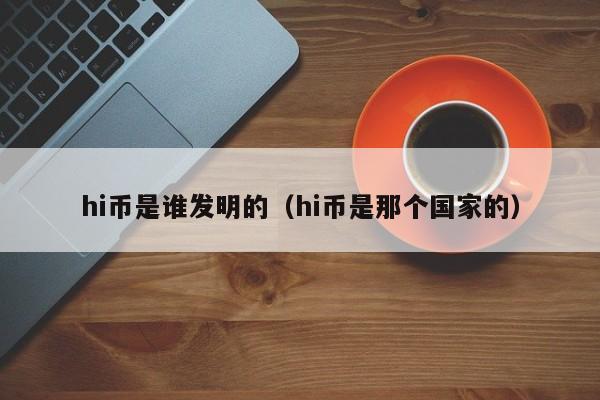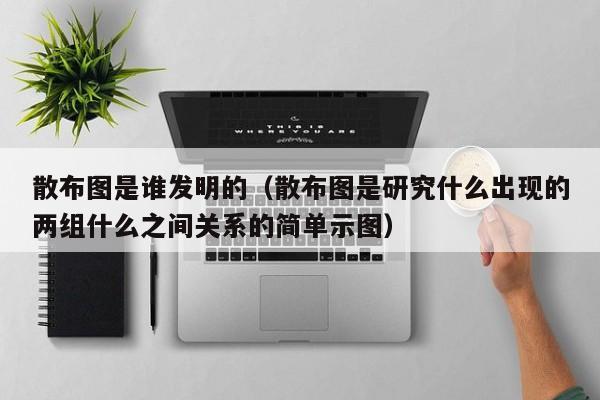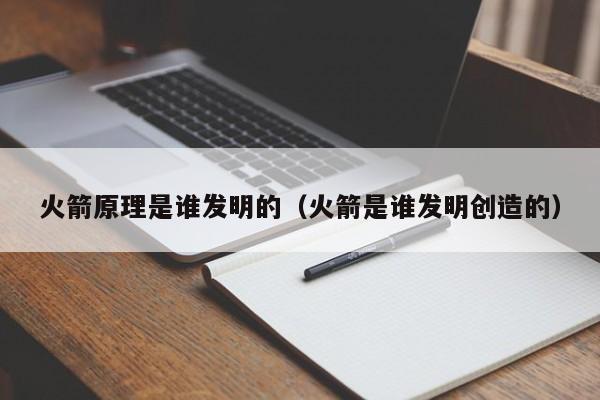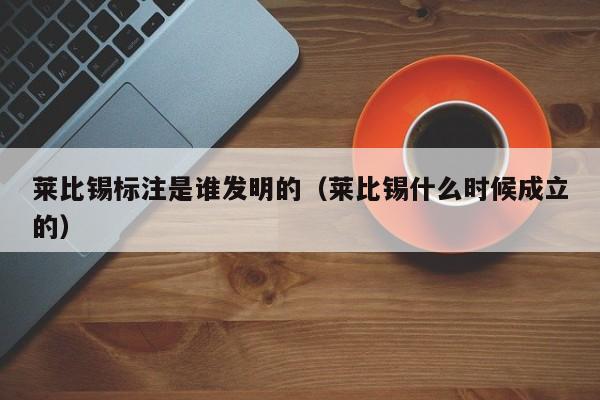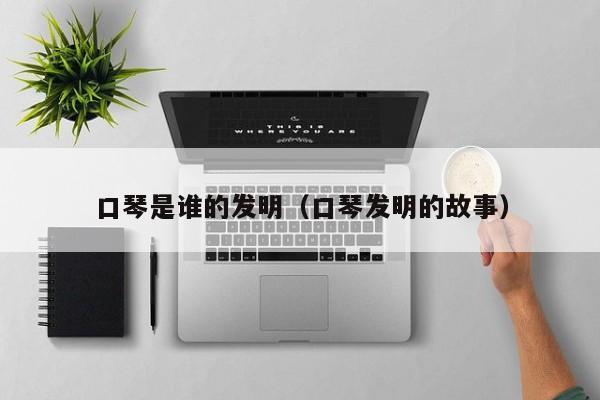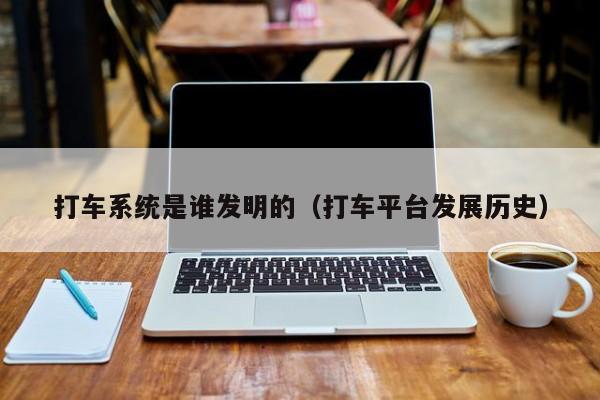关于autumn是谁发明的的信息
百科问答网今天要给大家分享的是有关autumn是谁发明的的知识,希望对于各位朋友学习的过程中有帮助。
文章目录:
求中秋节来历英文介绍(简短点,写下中文)谢谢了!
求中秋节来历英文介绍(简短点,写下源兆喊中文)谢谢了!
【原文】
相传古代齐国丑女无盐,幼年时曾虔诚拜月,长大雹野后,猜链以超群品德入宫,但未被宠幸。
【译文】
It is rumored ancient times together the ugly woman of country has no salt, childhood hour once the godliness does obeisance the month, after grow up, with the preeminence moral qualities go into temple, but don't drive love.
【原文】
某年八月十五赏月,天子在月光下见到她,觉得她美丽出众,后立她为皇后,中秋拜月由此而来。
【译文】
Some year August 15 appreciate the month, the Emperor sees her under the moonlight, feeling that her beauty is outstanding, after sign her as empress, the Mid-Autumn does obeisance the month from here and since then.
【原文】
月中嫦娥,以美貌著称,故少女拜月,愿“貌似嫦娥,面如皓月”。
【译文】
Charng-er in month, call with the beautiful looks 著 , the past young girl does obeisance the month, wish" look like the Charng-er, face such as the bright moon".
中秋节英文介绍 简单点
Mid-autumn Day
Mid-autumn Day is a Chinese festival. It usually es in September or October .On that day we usually eat a big dinner and mooncakes. It is said "Hou Yi" missed his wife, so he made mooncakes. It looks like the moon. There are many kinds of mooncakes. They are *** all round cakes with meat, nuts or something sweet inside . eating mooncakes has been our custom. Families stay outside in the open air eat a big dinner and mooncakes. The most important thing is looking at the moon, On that day, the moon kooks brighter and rounder. We call this moon the full moon. On that day, families get together, so we call this day getting –together. This is Mid –autumn Day. I love it very much. Because on that day I can eat mooncakes. And my brother es back home. He works outside all year. Only that day and the Spring Festival. He es back. So that day I am especially happy. On that day my family gets together
求中秋节来历 英文加中文 60字左右
"Zhong Qiu Jie", which is also known as the Mid-Autumn Festival, is celebrated on the 15th day of the 8th month of the lunar calendar. It is a time for family members and loved ones to congregate and enjoy the full moon - an auspicious symbol of abundance, harmony and luck. Adults will usually indulge in fragrant mooncakes of many varieties with a good cup of piping hot Chinese tea, while the little ones run around with their brightly-lit lanterns.
农历八月十五日是中国的传统节日——中秋节。在这天,每个家庭都团聚在一起,一家人共同观赏象征丰裕、和谐和幸运的圆月。此时,大人们吃著美味的月饼,品著热腾腾的香茗,而孩子们则在一旁拉着兔子灯尽情玩耍
"Zhong Qiu Jie" probably began as a harvest festival. The festival was later given a mythological flavour with legends of Chang-E, the beautiful lady in the moon.
中秋节最早可能是一个庆祝丰收的节日。后来,月宫里美丽的仙女嫦娥的神话故事赋予了它神话色彩。
Aording to Chinese mythology, the earth once had 10 suns circling over it. One day, all 10 suns appeared together, scorching the earth with their heat. The earth was saved when a strong archer, Hou Yi, sueeded in shooting down 9 of the suns. Yi stole the elixir of life to save the people from his tyrannical rule, but his wife, Chang-E drank it. Thus started the legend of the lady in the moon to whom young Chinese girls would pray at the Mid-Autumn Festival.
传说古时候,天空曾有10个太阳。一天,这10个太阳同时出现,酷热难挡。弓箭手后翌射下了其中9个太阳,拯救了地球上的生灵。他偷了长生不死药,却被妻子嫦娥偷偷喝下。此后,每年中秋月圆之时,少女们都要向月宫仙女嫦娥祈福的传说便流传开来。
In the 14th century, the eating of mooncakes at "Zhong Qiu Jie" was given a new significance. The story goes that when Zhu Yuan Zhang was plotting to overthrow the Yuan Dynasty started by the Mongolians, the rebels hid their messages in the Mid-Autumn mooncakes. Zhong Qiu Jie is hence also a memoration of the overthrow of the Mongolians by the Han people.
在14世纪,中秋节吃月饼又被赋予了一层特殊的含义。传说在朱元璋带兵起义推翻元朝时,将士们曾把联络信藏在月饼里。因此,中秋节后来也成为汉人推翻蒙古人统治的纪念日。
During the Yuan Dynasty (A.D.1206-1368) China was ruled by the Mongolian people. Leaders from the preceding Sung Dynasty (A.D.960-1279) were unhappy at submitting to foreign rule, and set how to coordinate the rebellion without it being discovered. The leaders of the rebellion, knowing that the Moon Festival was drawing near, ordered the making of special cakes. Packed into each mooncake was a message with the outline of the attack. On the night of the Moon Festival, the rebels suessfully attacked and overthrew the government. What followed was the establishment of the Ming Dynasty (A.D. 1368-1644). Today, moon cakes are eaten to memorate this event.
在元朝,蒙古人统治中国。前朝统治者们不甘心政权落入外族之手,于是密谋策划联合起义。正值中秋将近,起义首领就命令部下制作一种特别的月饼,把起义计划藏在每个月饼里。到中秋那天,起义军获取胜利,推翻了元朝,建立明朝。今天,人们吃月饼纪念此事。
英文介绍中秋节简单的
Mid-Autumn Day 中秋节
Mid-Autumn Day is a traditional festival in China. Almost everyone likes to eat mooncakes on that day. Most families have a dinner together to celebrate the festival. A saying goes, "The moon in your hometown is almost always the brightest and roundest". Many people who live far away from homes want to go back to have a family reunion. How happy it is to enjoy the moon cakes while watching the full moon with your family members
中秋节英文介绍及翻译
中秋节又称月夕、秋节、仲秋节、八月节、八月会、追月节、玩月节、拜月节、女儿节或团圆节,是流行于中国众多民族与东亚诸国中的传统文化节日,时在农历八月十五;因其恰值三秋之半,故名,也有些地方将中秋节定在八月十六。 中秋节始于唐朝初年,盛行于宋朝,至明清时,已与元旦齐名,成为中国的主要节日之一。受汉族文化的影响,中秋节也是东南亚和东北亚一些国家尤其是生活在当地的华人华侨的传统节日。自2008年起中秋节被列为国家法定节假日。国家非常重视非物质文化遗产的保护,2006年5月20日,该节日经国务院批准列入第一批国家级非物质文化遗产名录。 中秋节是中国三大灯节之一,过节要玩灯。但中秋没有像元宵节那样的大型灯会,玩灯主要只是在家庭、儿童之间进行的。译文:Also known as the Mid-Autumn festival, the moon and the moon festival, Mid-Autumn festival, the mid autumn festival, August will, chasing, play on, worship festival, sections or the mid autumn festival, is popular in many national and traditional culture festival in east Asian countries, when the lunar August 15; Because it is worth three and a half, the name, also some places to celebrate the Mid-Autumn festival in August 16. The Mid-Autumn festival, which began in the early tang dynasty, prevailed in the song dynasty and became one of the main festivals in China. Influenced by the han culture, the Mid-Autumn festival is also a traditional festival for some countries in southeast Asia and northeast Asia, especially the overseas Chinese living in the local area. The Mid-Autumn festival has been listed as a national holiday since 2008. The state attaches great importance to the protection of intangible cultural heritage. On 20 May 2006, the festival was approved by the state council to be listed in the first national intangible cultural heritage list. The Mid-Autumn festival is one of the three great Lantern Festival in China. But the Mid-Autumn festival does not have the big Lantern Festival like the Lantern Festival, playing the lamp is mainly in the family, children.
简单介绍一下中秋节的来历。
中秋节起源应为隋末唐军于大业十三年八月十五日,唐军裴寂以圆月作为构思,成功发明月饼,并广发军中作为军饷,成功解决因大量吸收反隋义军而衍生之军粮问题。
中秋节,又称月夕、秋节、仲秋节、八月节、八月会、追月节、玩月节、拜月节、女儿节或团圆节,是流行于中国众多民族与汉字文化圈诸国的传统文化节日,时在农历八月十五;因其恰值三秋之半,故名,也有些地方将中秋节定在八月十六。中秋节以月之圆兆人之团圆,为寄托思念故乡,思念亲人之情,祈盼丰收、幸福,成为丰富多彩、弥足珍贵的文化遗产。中秋节与端午节、春节、清明节并称为中国四大传统节日。
求中秋节英文介绍 要措辞低阶易懂 高二水平 谢!
Hou Yi (后羿) was a great archer(射手) and architect(建筑家), who shot down nine extra(多余的) suns that had suddenly appeared in the sky and thus(因此) kept the earth from being scorched(烤焦). He also built a palace of jade(翡翠) for the Goddess of the Western Heaven(西王母). For this, he was rewarded with a pill containing the elixir(长生不老药) of immortality(不朽), but with strings attached--he must fast(斋戒) and pray for a year before taking it. His wife, Chang E (嫦娥), whose beauty was surpassed(超过) only by her curiosity, discovered and swallowed(吞) the pill and in no time soared(高飞) to the moon and became a permanent(永久) resident(居民) there. Upon reaching the moon, Chang E, in di *** ay(沮丧), coughed up the pill, which turned into a jade rabbit that, day and night, pounds out a celestial(天上的) elixir for the immortals.
Another permanent lunar resident of Chinese origin(出身) is Wu Kang (吴刚), a shiftless(偷懒的) fellow who changed apprenticeships(学徒年限) all the time before disappointing(使失望) his last master, who was an immortal. From him Wu learned to be immortal himself, but he was punished(惩罚) by being required to chop(砍) down a cassia(肉桂) tree in the moon, an impossible mission. The cut in the tree heals(痊愈) pletely the same day, so Wu Kang is still chopping away for eternity(永远). Some Chinese crave(渴求) to drink his cassia blossom wine(桂花酒).
The Chinese believe that the moon is at its largest and brightest, and Chang E at her most beautiful, on the 15th night of the eighth lunar(阴历) month. They are at least half-right, for at that time most of China is in the dry season and the moon looms brightest. It's also cool then, a perfect time to celebrate the harvest which has just concluded; hence(因此), the Mid-Autumn Festival is also called the Harvest Festival. The festival is a time for family reunions(团聚) to appreciate the moon (赏月) and eat moon cakes together. Bathed in bright moonshine and with the pany(陪伴) of chrysanthemum(菊花) and cassia blossoms, poets(诗人) eat crab meat(蟹肉) and moon cake, drink tea and wine, and versify the night away.
中秋节的英文介绍和中文解释
Mooncakes are to Mid-Autumn Festival what mince pies are to Christmas. The seasonal round cakes traditionally have a sweet filling of lotus seed paste or red bean paste and often have one or more salted duck eggs in the center to represent the moon. And the moon is what this celebration is all about. Mid-Autumn Festival falls on the 15th day of the 8th month, it is the time when the moon is said to be at its brightest and fullest. This year the festival falls on October 1.
There are o legends which claim to explain the tradition of eating mooncakes. One Tang Dynasty myth holds that the Earth once had 10 suns circling it. One day all 10 suns appeared at once, scorching the pla with their heat. It was thanks to a skillful archer named Hou Yi that the Earth was saved. He shot down all but one of the suns. As his reward, the Heavenly Queen Mother gave Hou Yi the Elixir of Immortality, but she warned him that he must use it wisely. Hou Yi ignored her advice and, corrupted by fame and fortune, became a tyrannical leader. Chang-Er, his beautiful wife, could no longer stand by and watch him abuse his power so she stole his Elixir and fled to the moon to escape his angry wrath. And thus began the legend of the beautiful woman in the moon, the Moon Fairy.
The second legend has it that during the Yuan Dynasty, an underground group led by Zhu Yuan Zang was determined to rid the country of Mongolian dominance. The moon cake was created to carry a secret message. When the cake was opened and the message read, an uprising was unleashed which suessfully routed the Mongolians. It happened at the time of the full moon, which, some say, explains why mooncakes are eaten at this time.
Mooncakes are usually stamped with Chinese characters indicating the name of the bakery and the type of filling used. Some bakeries will even stamp them with your family name so that you can give personalised ones to friends and family. They are usually presented in boxes of four which indicate the four phases of the moon. Traditional mooncakes are made with melted lard, but today vegetable oil is more often used in the interests of health.
Mooncakes are not for the diet-conscious as they are loaded with calories. The best way to wash down one of these sticky cakes is with a cup of Chinese tea, especially Ja *** ine or Chrysanthemum tea, which aids the digestion.
中秋节吃月饼就像西方人圣诞节吃百果馅饼一样,是必不可少的。圆圆的月饼中通常包有香甜的莲子馅或是红豆馅,馅的中央还会加上一个金黄的咸鸭蛋黄来代表月亮。而月亮正是中秋节庆祝的主题。每年农历8月15日人们一起庆祝中秋,据说这一天的月亮是一年中最亮最圆的。今年的中秋节恰好是阳历的10月1日(中国的国庆日)。
关于吃月饼这个传统的来历有两个传说。一个是唐朝的神话故事,说的是当时地球被10个太阳包围着。有一天10个太阳同时出现在天空中,巨大的热量几乎把地球烤焦了。多亏一位名叫后羿的神箭手射下了9个太阳,地球才被保住。为了奖励后羿,王母娘娘赐给后羿一种长生不老药,但是王母警告他必须正当使用。然而后羿没有理会王母娘娘的警告,他被名利冲昏了头脑,变成了一个暴君。后羿美丽的妻子嫦娥对他的暴行再也不能袖手旁观,于是她偷走了后羿的长生不老药,飞到月亮上逃避后羿的狂怒。从此就有了关于月宫仙子嫦娥,这个月亮上的美丽女人的传说。
第二个传说讲的是在元朝,朱元璋领导的起义军计划起义来摆脱蒙古族的统治。他们用月饼来传递密信。掰开月饼就可以找到里面的密信,起义军通过这种方式成功的发动了起义,赶走了元朝的统治者。这场起义发生在八月十五之时,于是中秋节吃月饼的习俗便在民间传开来。
小练笔40字英文介绍中秋节
Mid-autumn Day is a traditional festival in China. It is usually in September or October. On that day people eat moon cakes and apples.All the family members have a big dinner together to celebrate it .After dinner they enjoy the moon and tell some interesting stories.
求:中秋节来历 简短。要50字以下。急!
中秋节与春节、端午节、清明并称为中国汉族的四大传统节日。从2008年起为国家法定节假日,5月20日,经国务院批准列入第一批国家级非物质文化遗产名录。

英语中国四大发明,发明者及年代
Papermaking
The earliest form of Chinese characters were inscriptions on oracle bones of the Shang Dynasty, followed by inscriptions on ancient bronze objects, and it was not until the Spring and Autumn Dynasty that the Chinese characters were carved onto bamboo slips strung up by hemp cords.
The Chinese characters were written on silk cloths during the Qin and the Han dynasties, and it was not until Cai Lun’s (蔡伦61-121) improved papermaking method in the Eastern Han Dynasty that paper was widely used throughout ancient China. Papermaking was a great event in the history of human civilization, and it was introduced into European countries 1,000 years later.
Gunpowder 发明者坦孙不详
Gunpowder, a mixture of charcoal, saltpeter and sulfur, was invented by ancient Chinese alchemists during the process of alchemy in the Sui and the Tang dynasties, and it is a highly volatile explosive. The ancient fire arrow resembles the present rocket tube in shape, and was widely used in battles on water.
The gunpowder was enormously employed in the wars during the Tang and Song dynasties; it was introduced into the Arabian countries by the Mongolians and then to the European countries.
Compass 发明者不详(我们中国人皆传说是黄帝或李发明)
The legend went that Huangdi (the legendary forebear of the Chinese nation) defeated the Chiyou tribe with the help of a southward-pointing cart, a kind of mechanical device for indicating directions in ancient times. On the basis of the southward-pointing cart, the Chinese people invented a compass in the Warring State Period(战国时衫信迟代) and later applied it to sea explorations and wars.
Great progress was made in compass-making in the Song Dynasty, when it greatly stimulated the development of the shipping industry. Later, the Arabians and Persians learned to make compasses from the ancient Chinese and introduced them to the European countries.
Printing Techniques
Before the emergence of a printing technique, books were transcribed by scholars one by one throughout the history of China. Although a rubbing technique and a block printing technique successively emerged in the Han Dynasty and the Western Jin Dynasty, it was still time-consuming to print a book.
Bi Sheng(970-1051毕升是活字印刷术的发明者)first invented movable type printing in the Song Dynasty, greatly promoting the development of the printing technique, for which he was praised as the father of typography.
The Chinese printing technique is a vanguard of human civilization, which was introduced to the European countries by the Arabians, and it creates favorable conditions for knowledge dissemination in the world.
【很希望我的回答会对你有帮助。如有不明白,可以再追问,若满意请采纳,谢谢你,并祝你进步!】
二十四节气是中国自己发明的还是从外国传过来的
二十四节气是我国劳动人民独创的文化遗产,它能反映季节的变化,指导农事活动,影响着千家万户的衣食住行。由于2000年来,我国的主要政治活动中心多集中在黄河流域,二十四节气也就是以这一带的气候、物候为依据建立起来的。由于我国幅员辽阔,地形多变,故二十四节气对于很多地区来讲只是一种参考。
二十四节气是根据太磨胡阳在黄道(即地球绕太阳公转的轨道)上的位置来划分的。视太阳从春分点(黄经零度,此刻太阳垂直照射赤道)出发,每前进15度为一个节气;运行一周又回到春分点,为一回归年,合360度,因此分为24个节气。节气的日期在阳历中是相对固定的,如立春总是在阳历的2月3日至5日之间。但在农历中,节气的日期却不大好确定,再以立春为例,它最早可在上一年的农历12月15日,最晚可在正月15日。
从二十四节气的字面含义来看:
立春、立夏、立秋、立冬——亦合称“四立”,分别表示四季的开始。“立”即开始的意思。公历上一般在每年的2月4日、5月5日、8月7日和11月7日前后。 “四立”表示的是天文季节的开始,从气候上说,一般还在上一季节,如立春黄河流域仍在隆冬。
夏至、冬至——合称“二至”,表示天文上夏天、冬天的极致。“至”意为极、最。夏至日、冬至日一般在每年公历的6月21日和12月22日。
春分、秋分——合称“二分”,表示昼夜长短相等。“分”即平分的意思。这两个节气一般在每年公历的3月20日和9月23日左右。
雨水——表示降水开始,雨量逐步增多。公历每年的2月18日前后为雨水。
惊蛰——春雷乍动,惊醒了蛰伏在土壤中冬眠的动物。这时气温回升较快,渐有春雷萌动。每年公历的3月5日左右为惊蛰。
清明——含有天气晴朗、空气清新明洁、逐渐转暖、草木繁茂之意。公历每年大约4月5日为清明。
谷雨——雨水增多,大大有利谷类作物的生长。公历每年4月20日前后为谷雨。
小满——其含义是夏熟作物的籽粒开始灌浆饱满,但还未正游蚂成熟,只是小满,还未大满。大约每年公历5月21日这天为小满。
芒种——麦类等有芒作物成熟,夏种开始。每年的6月5日左右为芒种。
小暑、大暑、处暑——暑是炎热的意思。小暑还未达最热,大暑才是最热时节,处暑是暑天即将结束的日子。它们分别处在每年公历的7月7日、7月23日和8月23日左右。
白露——气温开始下降,天气转凉,早晨草木上有了露水。每年公历的9月7日前后是白露。
寒露——气温更低,空气已结露水,渐有寒意。这一天一般在每年的10月8日。
霜降——天气渐冷,开始有霜。霜降一般是在每年公历的10月23日。
小雪、大雪——开始降雪,小和大表示降雪的程度。小雪在每年公历11月22日,大雪则在12月7日左右。
小寒、大寒——天气进一步变冷,小寒还未达最冷,大寒为一年中最冷的时候。公历1月5日和该月的20日左右为小、大寒。
二十四节气反映了太阳的周年视运动,所以节气在现行的公历中日期基本固定,上半年在6日、21日,下半年在8日、23日,前后不差1~2天
二十四节气
立春:斗指东北。太阳黄经为315度。是二十四个节气的头一个节气。其含意是开始进入春天,“阳和起蛰,品物皆春”,过了立春,万物复苏生机勃勃,一年四季从此开始了。
雨水 斗指壬。太阳黄经为330°。这时春风遍吹,冰雪融化,空气湿润,雨水增多,所以叫雨水。人们常说:“立春天渐暖,雨水送肥忙”。
惊蛰:斗指丁。太阳黄经为345°。这个节气表示“立春”以后天气转暖,春雷开始震响,蛰伏在泥土里的各种冬眠动物将苏醒过来开始活动起来举埋,所以叫惊蛰。这个时期过冬的虫排卵也要开始孵化。我国部分地区过入了春耕季节。谚语云:“惊蛰过,暖和和,蛤蟆老角唱山歌。”“惊蛰一犁土,春分地气通。”“惊蛰没到雷先鸣,大雨似蛟龙。”
春分:斗指壬。太阳黄经为0°。春分日太阳在赤道上方。这是春季90天的中分点,这一天南北两半球昼夜相等,所以叫春分。这天以后太阳直射位置便向北移,北半球昼长夜短。所以春分是北半球春季开始。我国大部分地区越冬作物进入春季生长阶段。各地农谚有:“春分在前,斗米斗钱”(广东)、“春分甲子雨绵绵,夏分甲子火烧天”(四川)、“春分有雨家家忙,先种瓜豆后插秧”(湖北)、“春分种菜,大暑摘瓜”(湖南)、“春分种麻种豆,秋分种麦种蒜”(安徽)。
清明:斗指丁。太阳黄经为15°。此时气候清爽温暖,草木始发新枝芽,万能物开始生长,农民忙于春耕春种。从前,在清明节这一天,有些人家都在门口插上杨柳条,还到郊外踏青,祭扫坟墓,这是古老的习俗。
谷雨:斗指癸。太阳黄经为30°。就是雨水生五谷的意思,由于雨水滋润大地五谷得以生长,所以,谷雨就是“雨生百谷”。谚云“谷雨前后,种瓜种豆”。
立夏:斗指东南。太阳黄经为45°。是夏季的开始,从此进入夏天,万物旺盛大。习惯上把立夏当作是气温显著升高,炎暑将临,雷雨增多,农作物进入旺季生长的一个重要节气。
小满:斗指甲。太阳黄经为60°。从小满开始,大麦、冬小麦等夏收作物,已经结果、籽粒饱满,但尚未成熟,所以叫小满。
芒种:北斗指向已。太阳黄经为75°。这时最适合播种有芒的谷类作物,如晚谷、黍、稷等。如过了这个时候再种有芒和作物就不好成熟了。同时,“芒”指有芒作物如小麦、大麦等,“种”指种子。芒种即表明小麦等有芒作物成熟。芒种前后,我国中部的长江中、下游地区,雨量增多,气温升高,进入连绵阴雨的梅雨季节,空气非常潮湿,天气异常闷热,各种器具和衣物容易发霉,所以在我国长江中、下游地区也叫“霉雨”。
夏至:北斗指向乙。太阳黄经为90°。太阳在黄经90°“夏至点”时,阳光几乎直射北回归线上空,北半球正午太阳最高。这一天是北半球白昼最长、黑夜最短的一天,从这一天起,进入炎热季节,天地万物在此时生长最旺盛。所心以古时候又把这一天叫做日北至,意思是太阳运生到最北的一日。过了夏至,太阳逐渐向南移动,北半球白昼一天比一天缩短,黑夜一天比一天加长。
小暑:斗指辛。太阳黄经为105°。天气已经很热,但不到是热的时候,所以叫小暑。此时,已是初伏前后。
大暑:斗指丙。太阳黄经为120°。大暑是一年中最热的节气,正值勤二伏前后,长江流域的许多地方,经常出现40℃高温天气。要作好防暑降温工作。这个节气雨水多,在“小暑、大暑,淹死老鼠”的谚语,要注意防汛防涝。
立秋:北斗指向西南。太阳黄经为135°。从这一天起秋天开始,秋高气爽,月明风清。此后,气温由最热逐渐下降。
处暑:斗指戊。太阳黄经为150°。这时夏季火热已经到头了。暑气就要散了。它是温度下降的一个转折点。是气候变凉的象征,表示暑天终止。
白露:斗指癸。太阳黄经为165°。天气转凉,地面水汽结露最多。
秋分:斗指已。太阳黄经为180°。秋分这一天同春人一样,阳光几乎直射赤道,昼夜几乎相等。从这一天起,阳光直射位置继续由赤道向南半球推移,北半球开始昼短夜长。依我国旧历的秋季论,这一天刚好是秋季九十天的一半,因而称秋分。但在天文学上规定,北半球的秋天是从秋分开始的。
寒露:斗指甲。太阳黄经为195°。白露后,天气转凉,开始出现露水,到了寒露,则露水日多,且气温更低了。所以,有人说,寒是露之气,先白而后寒,是气候将逐渐转冷的意思。而水气则凝成白色露珠。
霜降:太阳黄经为210°。天气已冷,开始有霜冻了,所以叫霜降。
立冬:太阳黄经为225°。习惯上,我国人民把这一天当作冬季的开始。冬,作为终了之意,是指一年的田间操作结束了,作物收割之后要收藏起来的意思。立冬一过,我国黄河中、下游地区即将结冰,我国各地农民都将陆续地转入农田水利基本建设和其他农事活动中。
小雪:太阳黄经为240°。气温下降,开始降雪,但还不到大雪纷飞的时节,所以叫小雪。小雪前后,黄河流域开始降雪(南方降雪还要晚两个节气);而北方,已进入封冻季节。
大雪:太阳黄经为255°。大雪前后,黄河流域一带渐有积雪;而北方,已是“千里冰封,万里雪飘荡”的严冬了。
冬至:太阳黄经为270°。冬至这一天,阳光几乎直射南回归线,我们北半球白昼最短,黑夜最长,开始进入数九寒天。天文学上规定这一天是北半球冬季的开始。而冬至以后,阳光直射位置逐渐向北移动,北半球的白天就逐渐长了,谚云:吃了冬至面,一天长一线。
小寒:太阳黄经为285°。小寒以后,开始进入寒冷季节。冷气积久而寒,小寒是天气寒冷但还没有到极点的意思。
大寒:太阳黄经为300°。大寒就是天气寒冷到了极点的意思。大寒前后是一年中最冷的季节。大寒正值三九刚过,四九之初。谚云:“三九四九不出手”。
大寒以后,立春接着到来,天气渐暖。至此地球绕太阳公转一周,完在了一个循环。
节气的来源
早在春秋战国时代,我国人民中就有了日南至、日北至的概念。随后人们根据月初、月中的日月运行位置和天气及动植物生长等自然现利用之间的关系,把一年平分为二十四等份。并且给每等份取了个专有名称,这就是二十四节气。到战国后期成书的《吕氏春秋》“十二月纪”中,就有了立春、春分、立夏、夏至、立秋、秋分、立冬、冬至等八个节气名称。这八个节气,是二十四个节气中最重要的节气。这八个节气标示出季节的转换,清楚地划分出一年的四季。后来到了《淮南子》一书的时候,就有了和现代完全一样的二十四节气的名称。
节气的划分
有人认为二十四节气从属农历,其实,它是根据阳历划定的。即根据太阳在黄道上的位置,把一年划分为24个彼此相等的段落。也就是把黄道分成24个等份,每等份各占黄经15°。由于太阳通过每等份所需的时间几乎相等,二十四节气的公历日期每年大致相同:上半年在6日、21日前后,下半年在8日、23日前后。并有两句口诀:
上半年来六、廿一,
下半年来八、廿三。
古时把节气称“气”,每月有两个气:前一个气叫“节气”,后一个气叫“中气”。二十四节气按月分布情况如下表,它又同农历闰月的安排有着密切的关系。在农历中,以立春为二十四个节气的头一个节气。二十四个节气的名称,是随着斗纲所指的地方并结合当时的自然气候与景观命名而来的。所谓斗纲,就是北斗七星中的魁、衡、杓三颗星随着天体的运行,斗纲指向不同的方向和位置,其所指的位置就是所代表的月份。如正月为寅,黄昏时杓是指寅,半夜衡指寅,白天魁是指寅;二月为卯,黄昏时杓是指卯,半夜衡是指卯,白天魁是指卯,其余的月份类推。
中国24节气中英文对照与时间
立春 the Beginning of Spring (1st solar term)Feb.3,4, or 5
雨水 Rain Water (2nd solar term)Feb.18,19 or 20
惊蛰 the Waking of Insects (3rd solar term)Mar.5,6, or 7
春分 the Spring Equinox (4th solar term)Mar.20,21 or 22
清明 Pure Brightness (5th solar term)Apr.4,5 or 6
谷雨 Grain Rain (6th solar term)Apr.19,20 or 21
立夏 the Beginning of Summer (7th solar term)May 5,6 or 7
小满 Lesser Fullness of Grain (8th solar term)May 20,21 or 22
芒种 Grain in Beard (9th solar term)Jun.5,6 or 7
夏至 the Summer Solstice (10th solar term)Jun.21 or 22
小暑 Lesser Heat (11th solar term)Jul.6,7 or 8
大暑 Greater Heat (12th solar term)Jul.22,23 or 24
立秋 the Beginning of Autumn (13th solar term)Aug.7,8 or 9
处暑 the End of Heat (14th solar term)Aug.22,23 or 24
白露 White Dew (15th solar term)Sep.7,8 or 9
秋分 the Autumn Equinox (16th solar term)Sep.22,23 or 24
寒露 Cold Dew (17th solar term)Oct.8 or 9
霜降 Frost\'s Descent (18th solar term)Oct.23 or 24
立冬 the Beginning of Winter (19th solar term)Nov.7 or 8
小雪 Lesser Snow (20th solar term)Nov.22 or 23
大雪 Greater Snow (21th solar term)Dec.6,7 or 8
冬至 the Winter Solstice (22th solar term)Dec.21,22 or 23
小寒 Lesser Cold (23th solar term)Jan.5,6 or 7
大寒 Greater Cold (24th solar term)Jan.20 or 2
节气歌
种田无定例,全靠看节气。立春阳气转,雨水沿河边。
惊蛰乌鸦叫,春分滴水干。清明忙种粟,谷雨种大田。
立夏鹅毛住,小满雀来全。芒种大家乐,夏至不着棉。
小暑不算热,大暑在伏天。立秋忙打垫,处暑动刀镰。
白露快割地,秋分无生田。寒露不算冷,霜降变了天。
立冬先封地,小雪河封严。大雪交冬月,冬至数九天。
小寒忙买办,大寒要过年。
二十四节气歌
春雨惊春清谷天,夏满芒夏暑相连,
秋处露秋寒霜降,冬雪雪冬小大寒。
一月两节不变更,最多相差一两天。
上半年是六、廿一,下半年逢八、廿三。
二十四节气七言诗
地球绕着太阳转,绕完一圈是一年。
一年分成十二月,二十四节紧相连。
按照公历来推算,每月两气不改变。
上半年是六、廿一,下半年逢八、廿三。
这些就是交节日,有差不过一两天。
二十四节有先后,下列口诀记心间:
一月小寒接大寒,二月立春雨水连;
惊蛰春分在三月,清明谷雨四月天;
五月立夏和小满,六月芒种夏至连;
七月大暑和小暑,立秋处暑八月间;
九月白露接秋分,寒露霜降十月全;
立冬小雪十一月,大雪冬至迎新年。
抓紧季节忙生产,种收及时保丰年。
节气百子歌
在四川地区,还流传着一首《节气百子歌》,每句以"子"结尾,描述了旧社会劳动人民的苦和乐:
说个子来道个子,正月过年耍狮子。
二月惊蛰抱蚕子,三月清明坟飘子。
四月立夏插秧子,五月端阳吃粽子。
六月天热买扇子,七月立秋烧袱子。
八月过节麻饼子,九月重阳捞糟子。
十月天寒穿袄子,冬月数九烘笼子。
腊月年关四处去躲帐主子。
节气联拾趣
我国农历一年之中有24个节气。在我国对联中,以节气为题材的很精彩,有的还含着一段故事呢。
传说明代有一位学台,在浙江天台山游览时,夜宿山中茅屋。次日晨起,见茅屋一片白霜,心有所感随口吟出上联。
昨夜大寒,霜降茅屋如小雪
联中嵌有三个节气,一气呵成,毫无痕迹。一时成为绝对。直至近代,才由浙江的赵恭沛先生对出下联:
今朝惊蛰,春分时雨到清明
一样三个节气,对得十分工整。
另一副对联则更有文学性和科学性:
二月春分八月秋分昼夜不长不短;三年一闰五年再闰阴阳无差无错。
上联不仅指出了春分和秋分这两个节气所在的月份,而且把这两个月份的时间特点讲得清清楚楚,即二八月是昼夜相平。下联则换了另一个角度,道出了农历闰年的规律性,其科学性也是毋庸置疑的。
原明朝大臣,后降清的洪承畴,在“谷雨”那天与人下棋时对了一副对联,云:
一局妙棋今日几乎忘谷雨;
两朝领袖他年何以别清明。
上联是洪承畴所出,下联为同弈者所对。意在讽刺洪失义辱节,一语双关,深藏讽意。
通过上述对autumn是谁发明的和的解读,相信您一定有了深入的理解,如果未能解决您的疑问,可在评论区留言哟。
版权声明
本文仅代表作者观点,不代表百度立场。
本文系作者授权百度百家发表,未经许可,不得转载。

